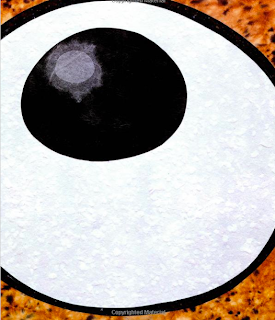 |
| by Katie Wood Ray |
But, in the context of the classroom, it means helping your students understand that tone can be "crafted" through the use of color, background, size, space and further through the use of shape, texture, exaggerated features, and whimsical details. I will detail a few.
Author / Illustrator extraordinaire, Steve Jenkins, showcases his strength for making powerful illustrations in his books. (Can you tell I'm a huge fan?!) One of my favorite is Actual Size

 Look how he takes images across pages to draw in the reader.
Look how he takes images across pages to draw in the reader.It is a wonderful
example of Technique 35: Crafting Tone with Size.
Your students would not get the enormity of just how large a giant squid's eye was if it was not drawn to scale. Although you would think the life-like size might scare some of your kiddos, he also keeps in mind Technique 37: Crafting Tone with Shape and Texture. The lines are soft and curvy, the background is textured and not in stark contrast from the eye, which lessons the intensity.
Another one of my favorite authors, Judy Schachner, of the Skippyjon Jones series, uses Technique 39: Using Whimsical Detail to Lighten the Tone when Skippyjon Jones sets off on his adventure in Skippyjon Jones, Lost in Spice
Not only does Skippyjon Jones have a mask, cape, mirror, and marble...but he has his precious sock monkey as well. His trinkets are what help make Skippyjon Jones intriguing for children.
And later, when he meets a Martian, you can tell immediately, by their proximity, that they're going to be fast friends. This is an example of Technique 36: Crafting Tone with Physical Space. They are both the same size, in the same physical space, and almost touching...visual imagery for friendship.
What are your thoughts? What kind of literature will you use to explain the use of tone in your students' illustrative work? I'd love to hear from you!


No comments:
Post a Comment